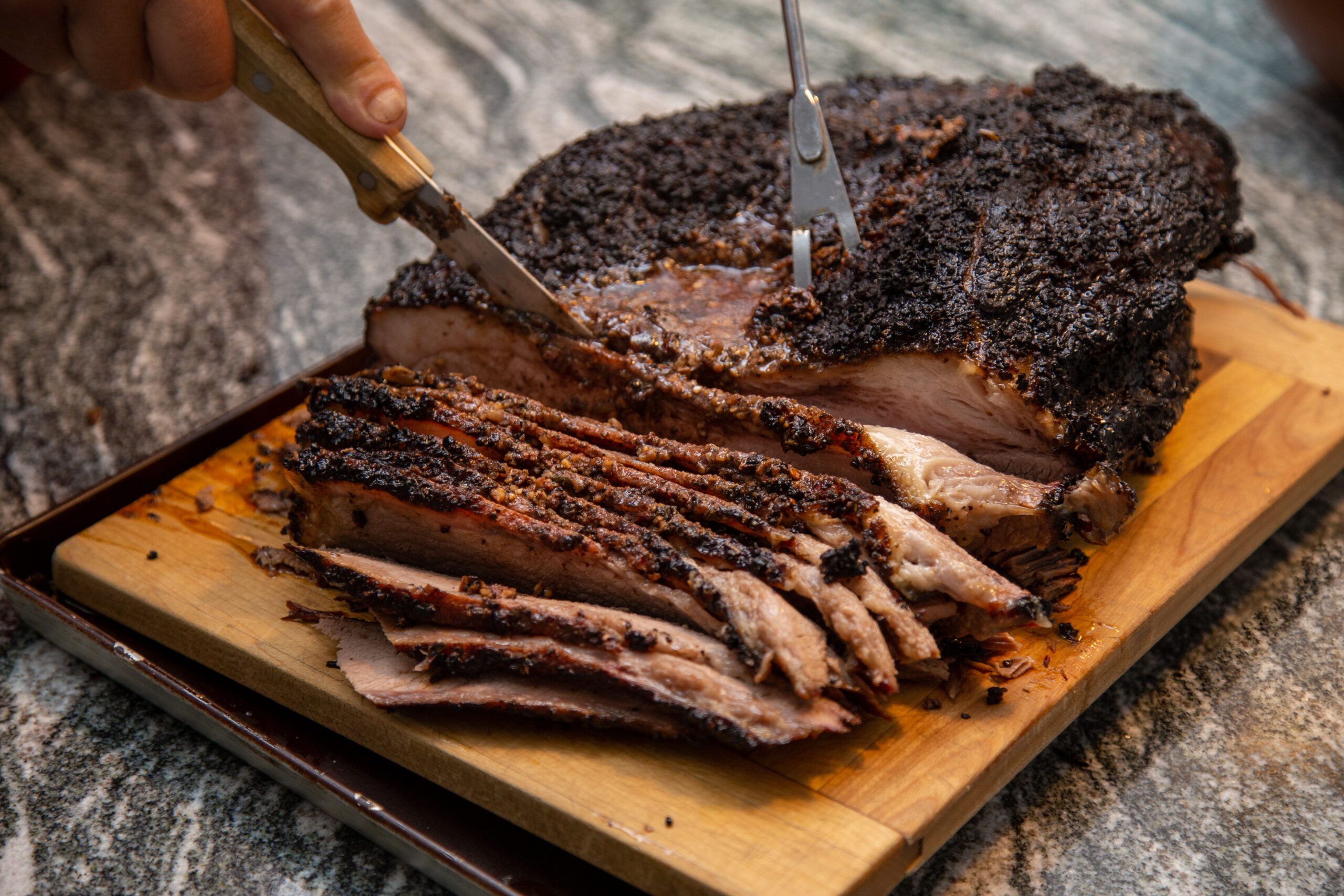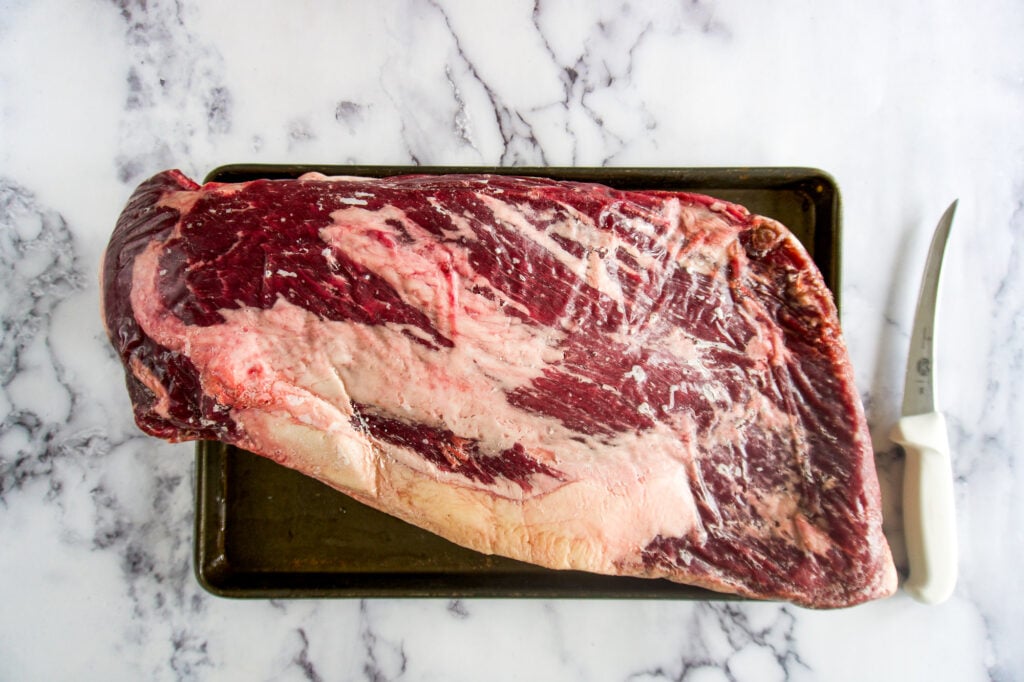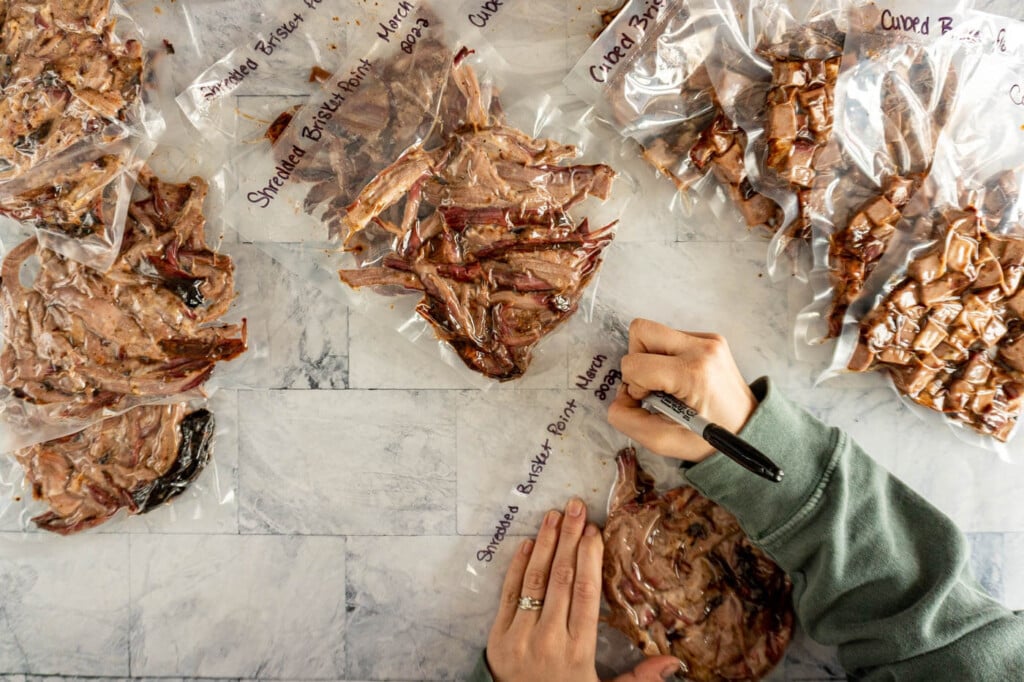Overview of Brisket Storage
Definition of Brisket
Brisket is a beloved cut of meat that comes from the breast area of the cow, specifically the pectoral muscle. This cut is known for its toughness, which is countered by slow cooking methods that tenderize the meat, making it a favorite in various cuisines around the world. Whether it’s used in Southern barbecue, served during Jewish holidays, or made into hearty Irish dishes, brisket holds a special place at the table.
Among the two primary cuts of brisket, the “first cut” is leaner, while the “second cut” is fattier and offers a richer flavor, ideal for smoking and slow cooking. Due to the sizable portions these cuts often come in, brisket is perfect for gatherings, prompting the need for reliable storage methods to manage leftovers effectively.
Importance of Proper Brisket Storage
Proper brisket storage is essential not only for maximizing flavor but also for ensuring food safety. Storing brisket correctly can prevent spoilage and potential foodborne illnesses, making it critical for home cooks. Here are a few key reasons to pay attention to brisket storage:
- Extended Shelf Life: When wrapped airtight and frozen, fresh brisket can last anywhere from six to twelve months, depending on the quality of the packaging and storage conditions. This means less waste and the convenience of having this versatile meat available whenever desired.
- Quality Preservation: Proper storage helps maintain the original flavor and texture of the brisket, ensuring that when it’s time to enjoy it, the meat is as delicious as intended.
- Convenience: Knowing how to store brisket means you can plan meals ahead of time. For example, if you’re preparing for a large gathering, having cooked brisket on hand can significantly reduce prep time leading up to the event.
Investing time in learning about brisket storage can ultimately elevate any meal, making it a joyful experience for you and your guests.

Can You Freeze Brisket?
Freezing Process for Brisket
Absolutely, you can freeze brisket, and it’s a great way to store this delicious cut of meat for extended periods. To ensure the best quality upon thawing, follow these steps for freezing brisket effectively:
- Wrap It Well: Since brisket can be large, consider cutting it into portions. Wrap each portion tightly in plastic wrap, making sure there are no air pockets.
- Vacuum Seal for Extra Longevity: If you have a vacuum sealer, use it. This method removes excess air and prevents freezer burn, which can diminish the quality of the meat.
- Label and Date: Don’t forget to label your packages with the date and contents. This will help you keep track of how long the brisket has been in the freezer.
- Optimal Storage Temperature: Ensure your freezer is set to 0°F or lower. This is essential for maintaining the quality of the brisket.
When done right, frozen brisket can maintain its best quality for six to twelve months, making it an excellent option for meal prep or bulk cooking.
Impact of Freezing on Brisket Quality
Freezing brisket is generally safe and effective, but it can have some effects on the quality. Here are several considerations:
- Texture Changes: While freezing doesn’t change the meat’s flavor significantly, it can alter the texture. The process may cause some breakdown of the muscle fibers, leading to a potentially more tender result when cooked. However, if not wrapped properly, it may also lead to freezer burn, affecting the taste.
- Flavor Considerations: Some notice that flavors can diminish slightly after being frozen for extended periods. Therefore, aiming to use the brisket within the recommended freezing window is advisable.
- Defrosting Matters: How you thaw your brisket can significantly influence the final dish. Proper thawing methods, which will be discussed later, can help retain the quality and flavor, ensuring a delightful meal even after freezing.
In conclusion, freezing brisket is a practical method to preserve its deliciousness and tenderness, as long as you follow proper techniques.

How Long Can You Freeze Brisket?
Recommended Freezing Duration for Brisket
When it comes to freezing brisket, timing is everything. For optimal flavor and quality, fresh brisket can be stored in the freezer for a robust six to twelve months if wrapped airtight. This makes it a great option for meal prep, allowing home cooks to purchase larger quantities without the fear of waste.
- Fresh Brisket:
- Recommended freezing duration: 6-12 months
- Ideal if properly vacuum-sealed or tightly wrapped to prevent freezer burn.
For cooked brisket, the timeline shifts slightly. If you’ve prepared a delightful brisket dish, you can expect it to hold up in the freezer for:
- Cooked Brisket:
- Without liquid or gravy: Up to 2 months
- Stored in gravy: Up to 3 months
It’s always a good practice to label your packages with the date when storing, ensuring you stay within these recommended durations.
Factors Affecting Freezing Duration
While these timelines provide a solid rule of thumb, there are several factors that can affect how long brisket stays “tasty” in the freezer:
- Packaging Quality: Vacuum sealing is the gold standard. It minimizes air exposure, significantly reducing the chances of freezer burn and maintaining flavor integrity.
- Freezer Temperature: Keeping your freezer at a consistent temperature of 0°F or lower is crucial for maintaining quality. Any fluctuations can compromise the meat over time.
- Meat Quality at Freezing: The initial freshness of the brisket at the time of freezing matters too. Top-quality meat frozen shortly after purchase will yield a better outcome than meat that has been stored for a while.
- Personal Preferences: Some enthusiasts find that while brisket may last longer in the freezer, the taste may alter as time goes on. It’s recommended to consume frozen brisket within six months for the best flavor experience.
Understanding these factors can help ensure that every brisket dish you serve remains delicious, even after some time in the freezer.

Thawing Brisket Safely
Thawing Methods for Brisket
Thawing brisket properly is as essential as the freezing process itself. A good thaw can make a world of difference in maintaining the quality and flavor of the meat. Here are a few reliable thawing methods:
- Refrigerator Thawing: This is the safest method to thaw brisket. Simply move the frozen brisket from the freezer to the refrigerator and let it defrost slowly. Depending on the size, this can take anywhere from 24 hours to a couple of days. A personal favorite among home cooks, this method ensures that the meat is kept at a safe temperature.
- Cold Water Thawing: If you’re pressed for time, you can use the cold water method. Place the brisket in a leak-proof plastic bag to prevent water exposure. Submerge the bag in cold water, changing the water every 30 minutes. This method usually takes a few hours, depending on the size of the brisket.
- Microwave Thawing: While not ideal, using a microwave to thaw brisket is an option. However, care must be taken as it can partially cook the meat. Always cook the brisket immediately after thawing in the microwave to prevent any bacterial growth.
Safety Precautions during Thawing Process
When it comes to thawing brisket, food safety should always be your top priority. Here are critical precautions to keep in mind:
- Avoid Room Temperature: Do not thaw brisket at room temperature, as this can lead to harmful bacterial growth. Keeping it at safe temperatures is crucial.
- Cook Promptly After Thawing: Especially with the microwave method, ensure that the brisket is cooked immediately after thawing to eliminate any risk of bacteria.
- Use a Meat Thermometer: When cooking the thawed brisket, using a meat thermometer ensures that it reaches the appropriate internal temperature (at least 195°F for brisket) to be tender and safe to eat.
Following these thawing methods and adhering to safety precautions will help ensure that your brisket is not only delicious but also safe for your friends and family to enjoy. You can bring the savory flavor of perfectly thawed brisket to the dinner table with confidence!

Storing Cooked Brisket
Guidelines for Storing Cooked Brisket
Storing cooked brisket properly is essential to ensure that it retains its delicious flavor while remaining safe to eat. Whether you’ve gone all out and smoked a whole packer brisket or prepared a corned beef brisket, there are a few guidelines to follow for optimal storage:
- Cool Down First: Allow your brisket to cool at room temperature for about an hour after cooking. This step is crucial to avoid condensation when stored, which can lead to spoilage.
- Wrap Thoroughly: Wrap the brisket tightly in plastic wrap or aluminum foil. This protects it from absorbing other odors in the refrigerator and preserves its moisture. Alternatively, immerse it in an airtight container for added protection against air exposure.
- Store in Portions: If you have a large brisket, consider slicing it into meal-sized portions before storing. This makes it easy to grab just what you need for a quick meal later.
Following these guidelines will help ensure that your brisket is as scrumptious the next time you serve it as it was the first time!
Proper Refrigeration Techniques
Choosing the right refrigeration techniques can make all the difference in maintaining the quality of your cooked brisket. Here’s what to keep in mind:
- Temperature Check: Always store brisket in the coldest part of your fridge, ideally between 32°F and 40°F. Keeping it too warm can promote bacterial growth.
- Refrigeration Duration: Cooked brisket without any liquid or gravy can last up to four days in the fridge. However, if it was stored in gravy, it’s best enjoyed within two days to maintain its quality.
- Labeling: When you store the brisket, label it with the date it was cooked. This will help you keep track of how long it has been in the refrigerator and ensure that you consume it while still fresh.
For any brisket enthusiast, proper storage techniques guarantee not only safety but also flavorful, tender meals down the line. Enjoying the fruits of your labor is just a few steps away, turning leftovers into reinvigorated family favorites!

Tips for Maintaining Brisket Quality
Best Practices for Preserving Brisket Flavor
Maintaining the quality of brisket is crucial for ensuring that every bite is packed with flavor and tenderness. Here are some proven best practices to help preserve brisket flavor:
- Cool and Store Quickly: After cooking, allow your brisket to cool at room temperature for a limited time before refrigerating. Prompt cooling not only preserves flavor but also prevents bacterial growth.
- Seal for Freshness: Wrap your brisket tightly in plastic wrap or foil, and consider using a vacuum sealer for the best results. This helps maintain moisture and keeps out air, which can lead to freezer burn.
- Use Quality Ingredients: Starting with a high-quality brisket sets the stage for flavor. Look for well-marbled cuts, such as USDA Choice or Prime, from a reputable butcher.
- Marinate or Inject for Flavor: Before cooking, consider marinating your brisket or injecting it with beef broth or spices. This step adds moisture and infuses flavor throughout the meat.
- Reheat with Care: When reheating leftover brisket, do so gently to avoid drying it out. Microwave or steam it to retain moisture and flavor.
Avoiding Common Mistakes in Brisket Storage
While brisket can be a delightful dish, improper storage can ruin its quality. Here are some common mistakes to avoid:
- Not Using Airtight Containers: Failing to use airtight containers can lead to exposure to air and moisture, causing your brisket to dry out and lose its delicious flavor.
- Ignoring Storage Time Limits: Keep a close eye on how long your brisket has been stored. Cooked brisket without liquid should be consumed within four days in the fridge and two months in the freezer.
- Thawing Improperly: Thawing brisket at room temperature is a recipe for disaster, as it encourages bacterial growth. Always thaw in the refrigerator or cold water for safety.
- Slicing Before Storing: If you plan to store cooked brisket, consider keeping it whole until you’re ready to serve. Slicing exposes more surface area to air, which can dry it out more quickly.
By implementing these tips and practices, home cooks can confidently enjoy delicious brisket that remains flavorful and tender. Proper care will ensure that every serving makes the cut, keeping family and friends coming back for more!

Leave a Reply